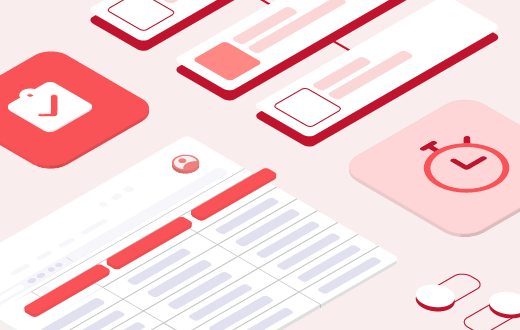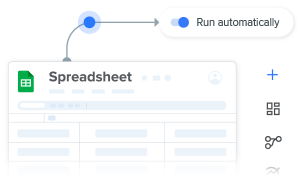Project managers face the difficult duty of coordinating budgets and projects while overseeing employees and presenting reports to their superiors. Reaching multiple deadlines staying organized is an almost impossible task. This is only made worse if you have to manage an online team. As this is a common problem for many businesses, numerous software companies have developed tools to alleviate some of the workload. Sadly, most of these tools are extremely expensive, and actually complicate matters further thanks to the need for extra training to use the features effectively. Not only do you waste money, but you also waste precious time. That’s why Sheetgo has a project management template in Excel.
If you’ve used Microsoft Excel before, you’re aware of its large array of capabilities, including real-time data syncing and comprehensive sharing capabilities. As a result, it’s the perfect spreadsheet program for project management and collaboration with colleagues. The high level of cloud computing Microsoft Excel uses takes teamwork to a new level. The Project management template by Sheetgo is, therefore, the best way to create an entirely automated system using your Excel files. Let’s explore how the template works and how you can implement it into your operations in a matter of minutes.
Why use Microsoft Excel to manage expenses?
- Flexible: You can tailor Excel spreadsheets to your business’s specific demands and expectations. And best of all, you do not need any coding or software knowledge to adapt the Project management template in Excel to your needs.
- Accessible: All your data is accessible from anywhere in the world. You can share it with your colleagues so they can easily collaborate with you. This makes the Project management template in Excel completely accessible as long as you have an internet connection.
- Compatible: Microsoft Excel is easily compatible with any software you or a colleague might be using. Because of this, different departments of your company can import data into the Project management template in Excel with ease.
- Ease of use: Most of your staff are likely familiar with the use of spreadsheets which makes onboarding easier. As a result, an Excel-based project management template is perfect for both beginners and advanced users.
How to get the Project management template for Excel
To begin, follow these steps:
- Click the button below to download the template.
- Follow the instructions below to get started.
How to use the Project management template for Excel
Step 1: Choose your settings
Open up the Project management file in Excel and open the Inputs sheet.
Adjust your settings in the boxes. This includes the project start date, Gannt view format, and the day of the week of which your work week starts.

Step 2: Input project tasks
Go to the WBS tab within the master sheet, and enter your project data by overwriting the sample data (columns E to G).

What is a WBS?
WBS is an abbreviation for Work Breakdown Structure. It’s a technique for breaking down a project into small, achievable chunks.
Organize the project by clicking on the WBS tap and filling out columns E to G: ‘Project’, ‘Sub-project’, and ‘Task title’. Here’s an example of breaking down a project into smaller steps:
Project: “Planning”
Sub-project: “Preliminary scope plan”
Task title: “Research”
Step 3: Enter the dependencies of the tasks
Now, input the dependency of each task in columns H and I. This lets you know whether a task can begin when another one starts (Start-to-start), or whether a task can only begin once another has been completed (Start-to-finish).
For example, in the screenshot below, you can see that task 1.5.1 can only begin once 1.1.1 has is complete.
Enter any dependencies of tasks in column H. Change the dependency relationship of your tasks by selecting an option from the dropdown menu in Column I.

Step 4: Select the duration of a task and the owner
Use column J to enter how many days a task must be completed. Use column K to add the name of the task owner.

Start tracking your team’s progress
Step 5: Monitor progress
You can now easily track the progress of all the tasks from the Gantt sheet.

And there you have it! With the number of hours you save using this Sheetgo template, you can now invest this time into other important aspects of your business.




